One Day, We May Dream Greenland
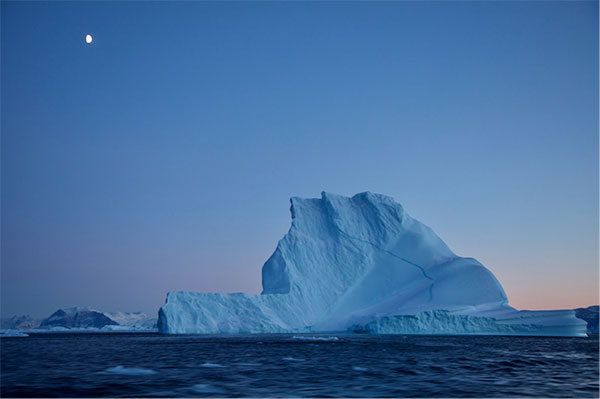
One Day, We May Dream Greenland
by Mortaza Behboudi (Uummannaq, Greenland)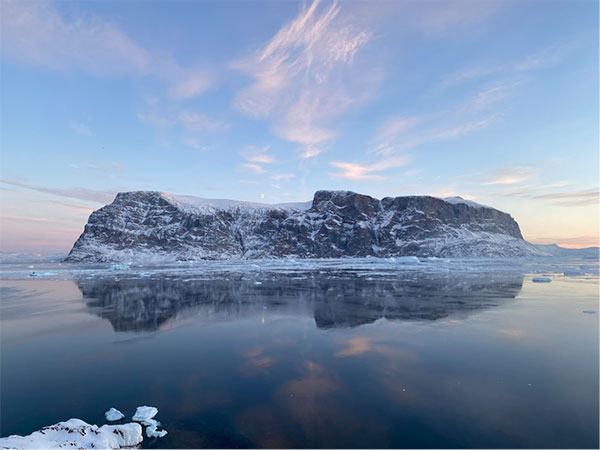 AS huge icebergs melt dramatically in northern Greenland—even in winter—inhabitants of the world’s largest island find their lifestyles reshaped. In a few years, iconic aspects of Greenland culture such as dogsledding will become impossible. Greenlanders are exposed to the twin pressures of globalization and climate change, with one impacting the other in the transformation of the island.
The food supply and the economy of the island—closely linked to each other—have already been globalized. Receiving food from Denmark, which controls the island politically, locals are not dependent on fishing for their survival anymore. Instead, fishing has become an export industry, fuelling the island’s economy as fish are shipped to Denmark and the rest of Europe.
As elsewhere, the latest technology has come to mark daily lives. Some of the tech is global: young Greenlanders are equipped with AirPods, iPhones, and other state-of-the-art gadgets. And some is locally adapted, like the snowmobiles that have largely replaced dogsleds. These days, dogs are hunted: they are seen as useless and not worth feeding, and their skin is used for clothes.
But elders think differently: “When the ice is fragile,” they say, “dogs feel it and not snowmobiles. If the ice breaks and you fall into the water, dogs come to the rescue and not snowmobiles.’’
AS huge icebergs melt dramatically in northern Greenland—even in winter—inhabitants of the world’s largest island find their lifestyles reshaped. In a few years, iconic aspects of Greenland culture such as dogsledding will become impossible. Greenlanders are exposed to the twin pressures of globalization and climate change, with one impacting the other in the transformation of the island.
The food supply and the economy of the island—closely linked to each other—have already been globalized. Receiving food from Denmark, which controls the island politically, locals are not dependent on fishing for their survival anymore. Instead, fishing has become an export industry, fuelling the island’s economy as fish are shipped to Denmark and the rest of Europe.
As elsewhere, the latest technology has come to mark daily lives. Some of the tech is global: young Greenlanders are equipped with AirPods, iPhones, and other state-of-the-art gadgets. And some is locally adapted, like the snowmobiles that have largely replaced dogsleds. These days, dogs are hunted: they are seen as useless and not worth feeding, and their skin is used for clothes.
But elders think differently: “When the ice is fragile,” they say, “dogs feel it and not snowmobiles. If the ice breaks and you fall into the water, dogs come to the rescue and not snowmobiles.’’
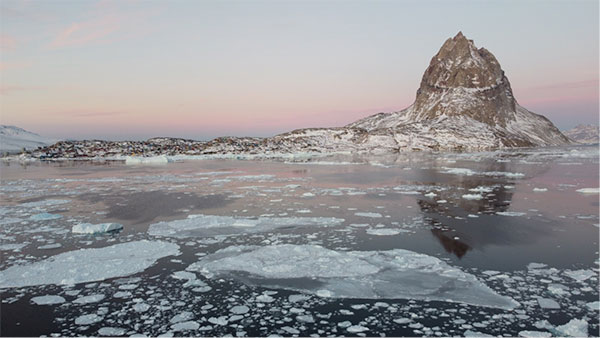 Ocean temperatures have been increasing in winter, threatening the integrity of icebergs. Ice-fjords have become smaller, with icebergs moving around in them until they break apart. It is New Year’s Eve. Afternoon rain is followed by a storm above the arctic circle and snow at night. The temperature has risen from -19°C to -2°C in a week. The climate is changing fast here, 590 km above the arctic circle, on the small Greenlandic island of Uummannaq.
Ocean temperatures have been increasing in winter, threatening the integrity of icebergs. Ice-fjords have become smaller, with icebergs moving around in them until they break apart. It is New Year’s Eve. Afternoon rain is followed by a storm above the arctic circle and snow at night. The temperature has risen from -19°C to -2°C in a week. The climate is changing fast here, 590 km above the arctic circle, on the small Greenlandic island of Uummannaq.
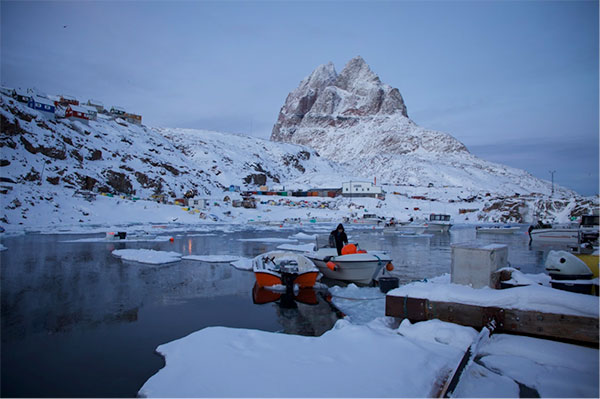
The island, receiving three hours of sunlight per day, is covered in white snow. The harbor is packed with boats. Fishers come to clean boats full of snow, but not to fish and sail. The windy seas are not safe to sail these days. A week later, Simmi, a local fisherman, takes me out to sea. Passing through gigantic sheets of ice, the view is breathtaking. Simmi hopes more fish will catch in his net today.
The coronavirus pandemic hasn’t touched Greenland yet. But as it rages across Europe, the disease has hit the fishers and their economy. “We export fish for much cheaper now,” Simmi explains. “The price is not the same as before the pandemic.” Indeed, it has gone down from around 31 DKK to 21 DKK per kilo of fish.
Greenland is famous for its glaciers, but in the past few years, the world’s largest island has been shedding ice and taking on fire. Scientists didn’t expect to see Greenland melt at this rate for another 50 years.
Âne, a 53-year-old fisherwoman, dreams of going back twenty years and dogsledding to local villages and islands around Greenland. “Alcohol has replaced playing with dogs and making local souvenirs.” She smiles while cleaning her boat in Ilulissat harbor. We may hope to visit Greenland before it’s too late. Unimaginable to see the island one day without its northern lights, ice sheets, and polar bears.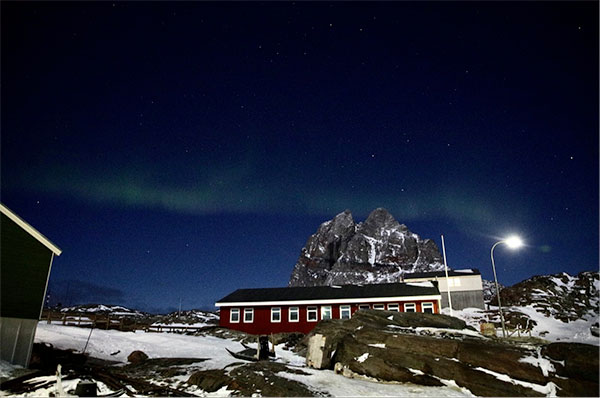 In winter, a soft pink light emanates from the sky, an experience of sunlight with no sun. Around 3pm, the sky goes dark and the never-ending evening begins. One single night like this, with its thousand stars and northern lights, is enough to mark you forever and make you never want to leave again.
In winter, a soft pink light emanates from the sky, an experience of sunlight with no sun. Around 3pm, the sky goes dark and the never-ending evening begins. One single night like this, with its thousand stars and northern lights, is enough to mark you forever and make you never want to leave again. 

Beautiful article 🌟🌟🌟🌟🌟